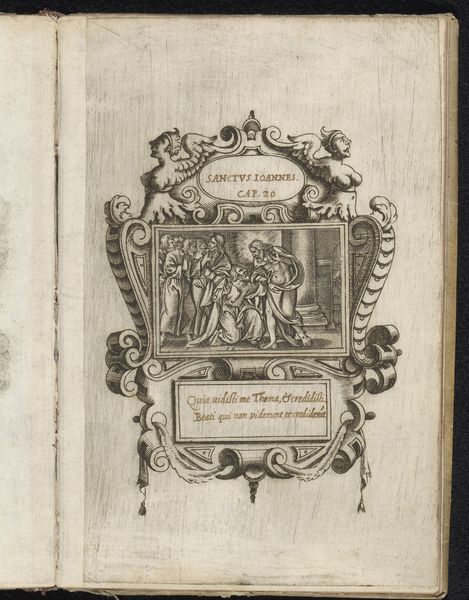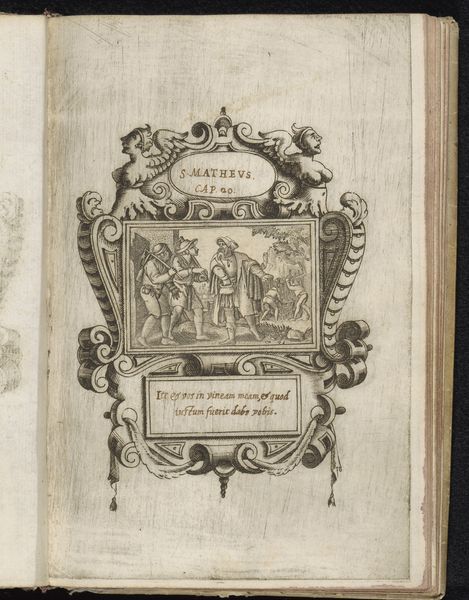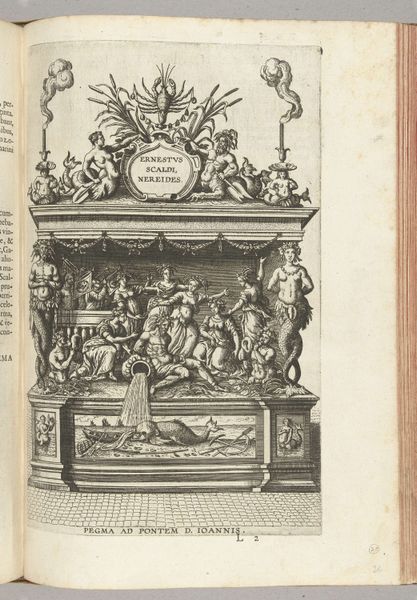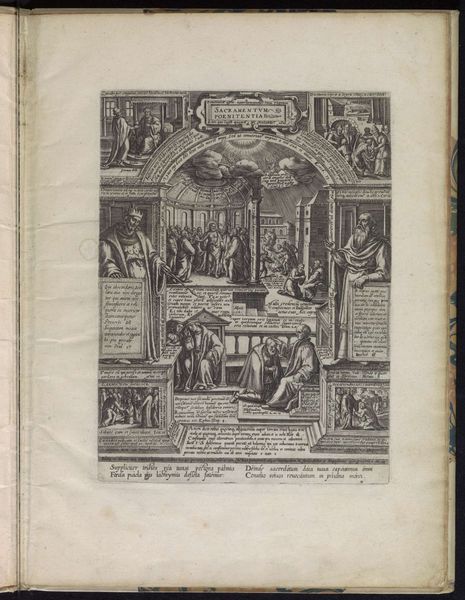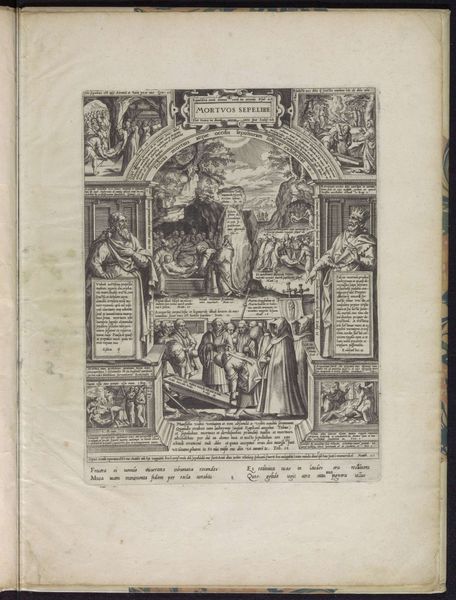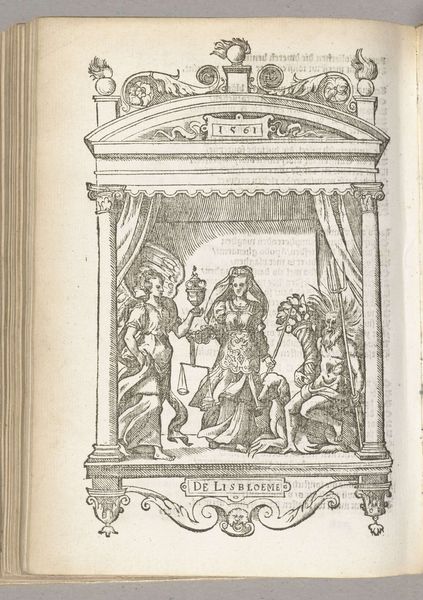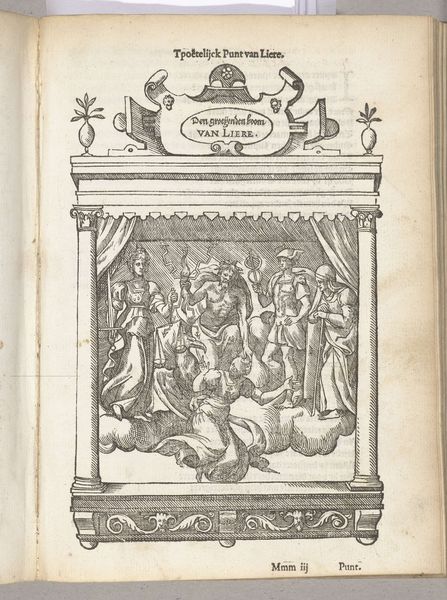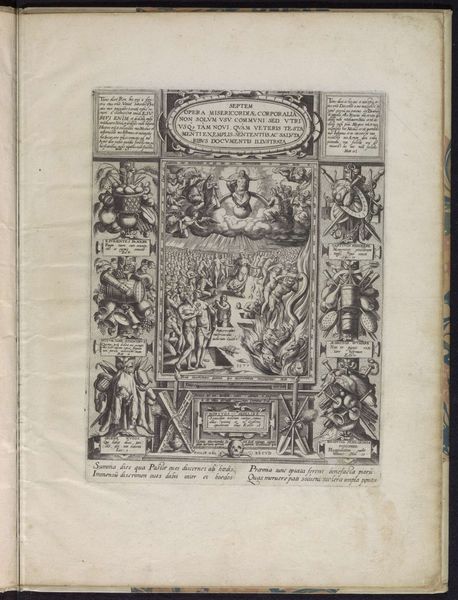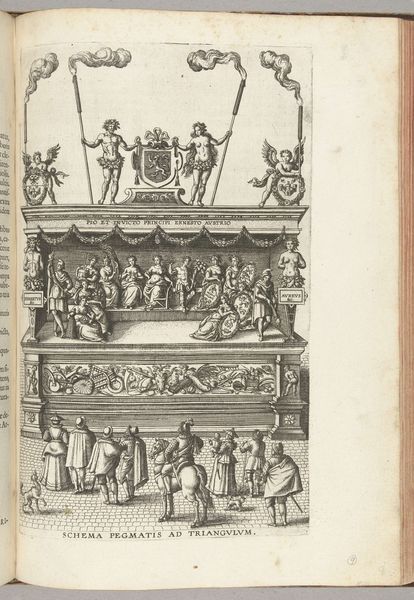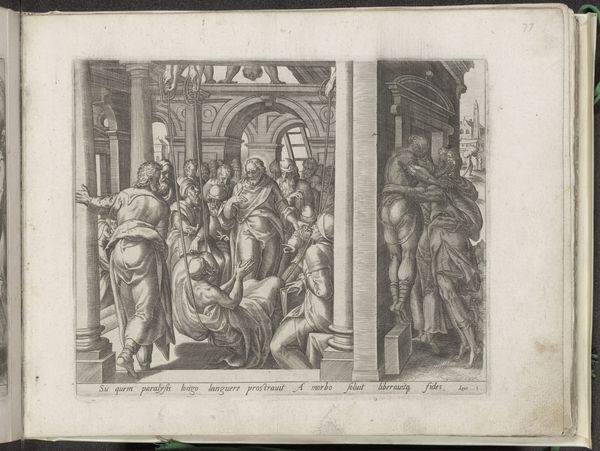
print, paper, ink, engraving
#
aged paper
#
toned paper
#
narrative-art
# print
#
pen sketch
#
sketch book
#
paper
#
form
#
personal sketchbook
#
ink
#
pen-ink sketch
#
pen and pencil
#
line
#
pen work
#
sketchbook drawing
#
history-painting
#
sketchbook art
#
engraving
Dimensions: height 40 mm, width 60 mm, height 175 mm, width 115 mm
Copyright: Rijks Museum: Open Domain
Editor: We’re looking at "Opwekking van Lazarus" (The Raising of Lazarus) made sometime between 1570 and 1610, and housed at the Rijksmuseum. The artist is known only as Monogrammist HSD. It’s an engraving, ink on paper, and given the title, it seems to be a religious scene. I’m curious – what do you make of it, especially in its historical context? Curator: This print offers a glimpse into the visual culture of the late 16th and early 17th centuries. Consider how religious narratives, like the Raising of Lazarus, were disseminated to a wider public through printed images. The “Monogrammist HSD” remains a mysterious figure, underscoring the sometimes-anonymous nature of artistic production within the printmaking industry of that era. The presence of text incorporated with the image-- "Sanctus Ioannes. Cap. 11" and "Solvite eum, & sinite abire"--emphasizes its function within a textual context. Editor: So, was this a way to spread religious ideas, and how did images like this function socially? Curator: Precisely! Think about the role of prints in the Reformation and Counter-Reformation. Images became powerful tools for conveying religious messages and shaping public opinion. The quality and style would signal to its intended audience – perhaps more academic or elite due to the Latin inscription. Moreover, where was it located within a book, and what does that tell us about its social and religious role? Editor: That's interesting; it gives new insight to view it not just as art, but also as a historical artifact. Curator: Indeed. It’s a reminder that art always exists within a network of social, cultural, and institutional forces, helping to shape both its production and its interpretation. Editor: I see what you mean! Viewing art as historical evidence certainly shifts your perspective. Curator: Exactly. Hopefully, it highlights how studying the public role of art allows a richer appreciation of art's meaning.
Comments
No comments
Be the first to comment and join the conversation on the ultimate creative platform.
